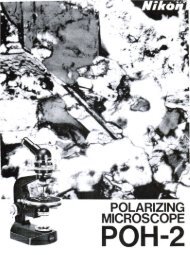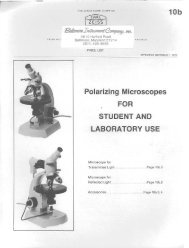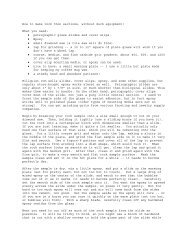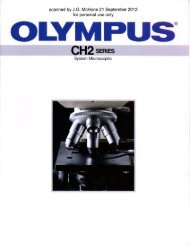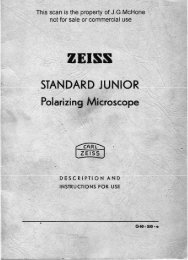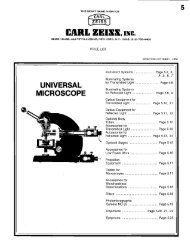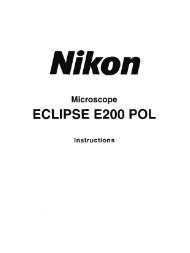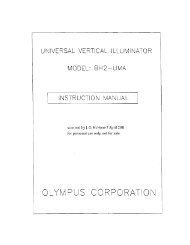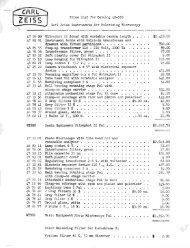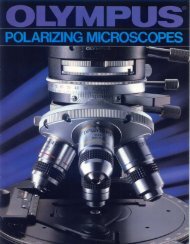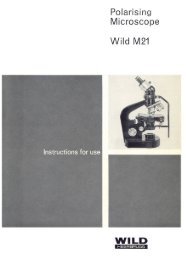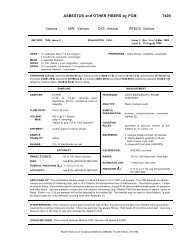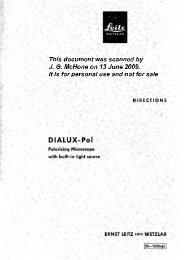Olympus EHT & FHT Research Microscopes instruction manual
Olympus EHT & FHT Research Microscopes instruction manual
Olympus EHT & FHT Research Microscopes instruction manual
You also want an ePaper? Increase the reach of your titles
YUMPU automatically turns print PDFs into web optimized ePapers that Google loves.
H. eare for Storing<br />
Moisture and dust are the most deadly factors to microscopes. Since both<br />
moisture and dust are found in most laboratories,microscopes should<br />
be kept in containers immediately after use. If this is not possible. they<br />
should be covered with the vinyl dust cover provided.<br />
As for objectives and eyepieces, it is best to keep them in desiccators.<br />
Failing this, they should be kept in cases containing such desiccants as<br />
silica gel. After.the eyepieces are removed from the microscope. the vacant<br />
eyepiece sleeves should be covered with protective caps. By no means<br />
should a microscope be disassembled for repairs. This should be left to<br />
the <strong>Olympus</strong> repair service.<br />
<strong>Microscopes</strong> must always be kept clean. Fioe dust on parts that cannot<br />
be reached by hand should be blown or wiped off by means of an air<br />
blower or a clean feather.<br />
VI<br />
OPTICAL<br />
CHARACTERISTICS<br />
A. Eyepieces (P, WF, K) x Objectives (Ach, FI, Plan)<br />
S,_ N~ Acnromlli( Fluorite Plan AchromatIC<br />
IMgnil'catiOfl 0, '0, 00,<br />
""', '0, '00, 0,<br />
,."<br />
Numerical Aoe.tu.



